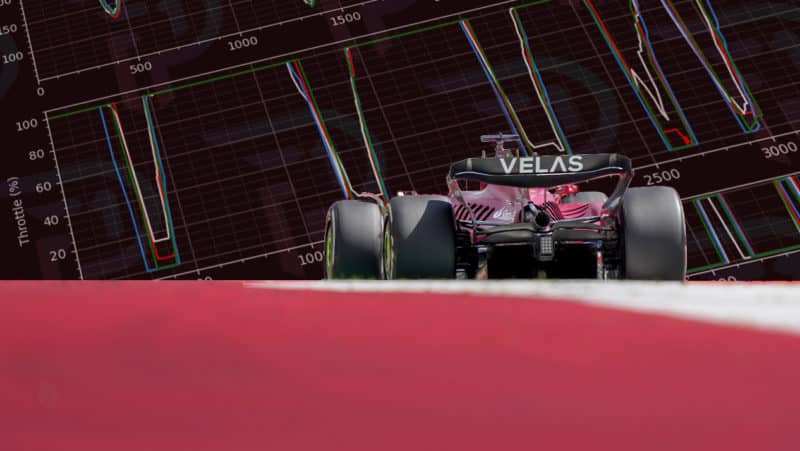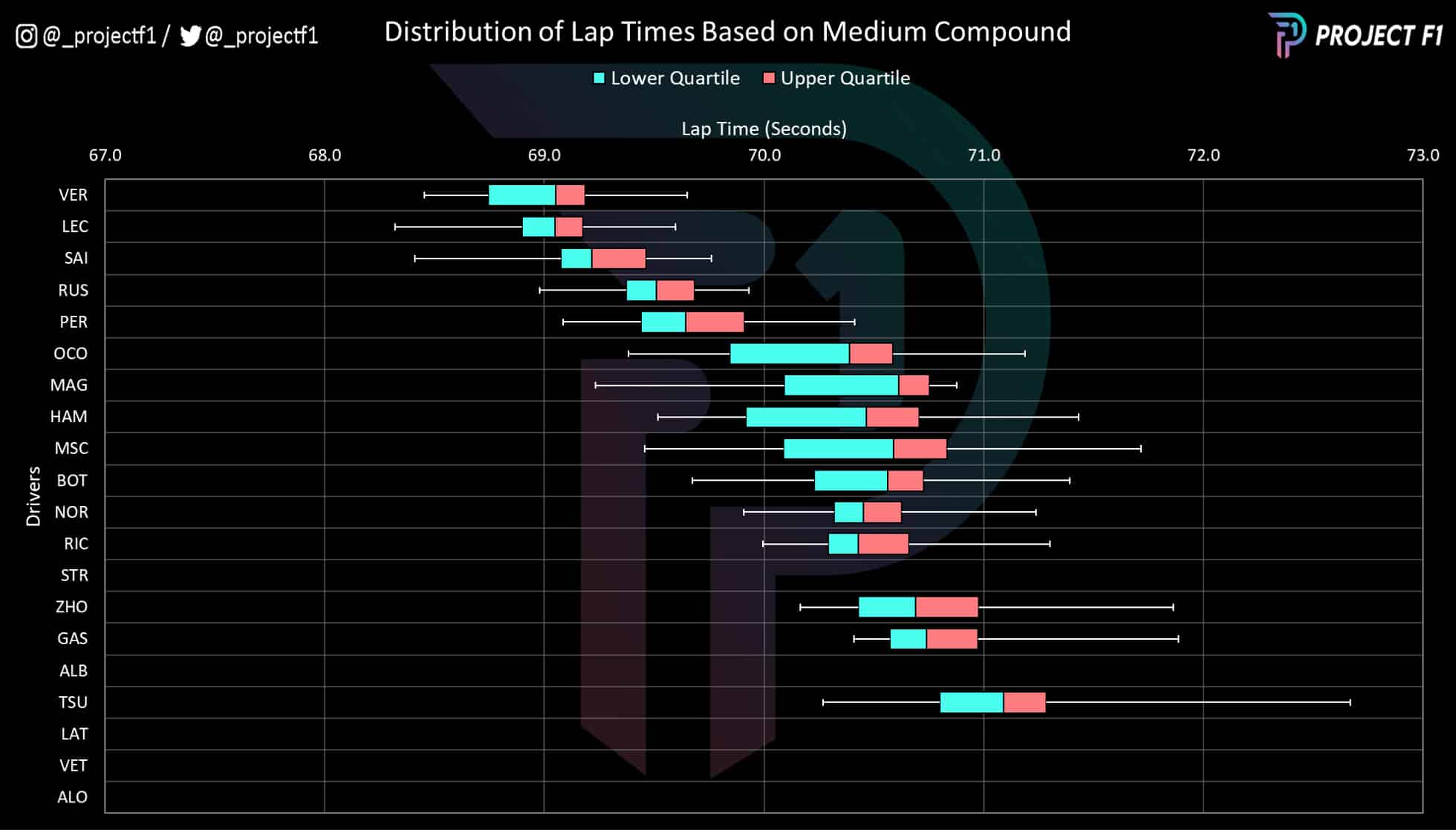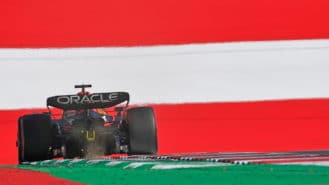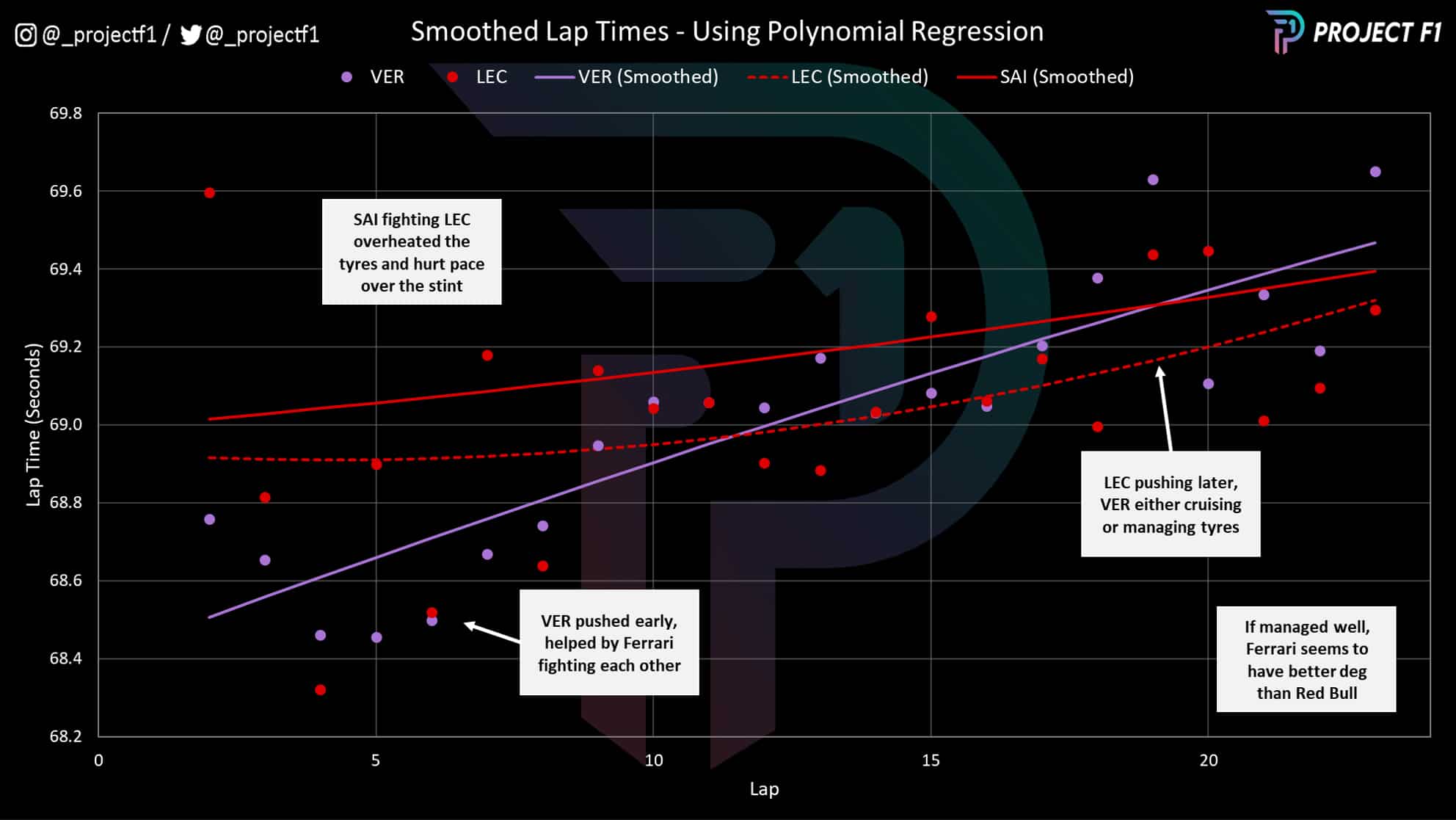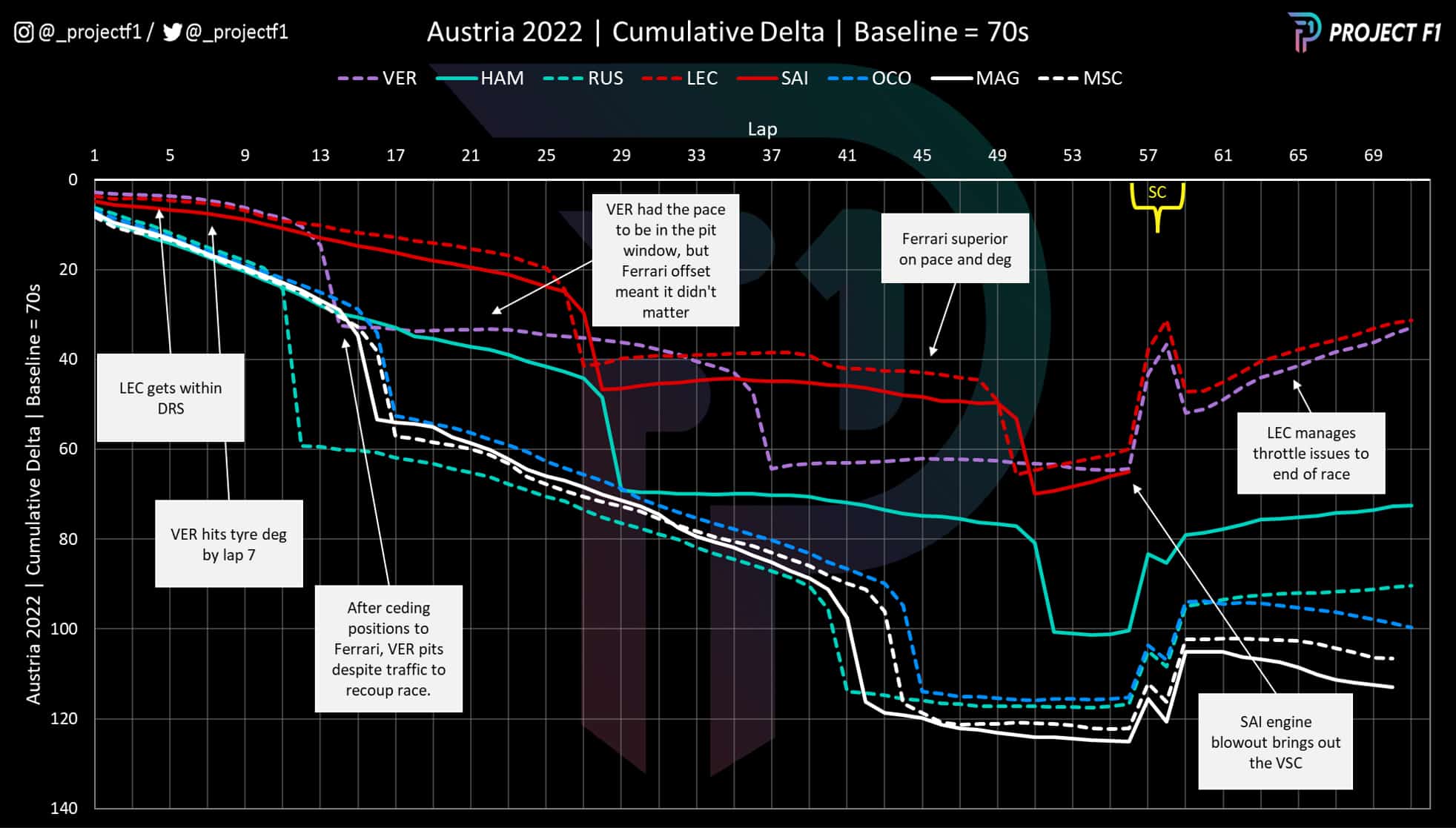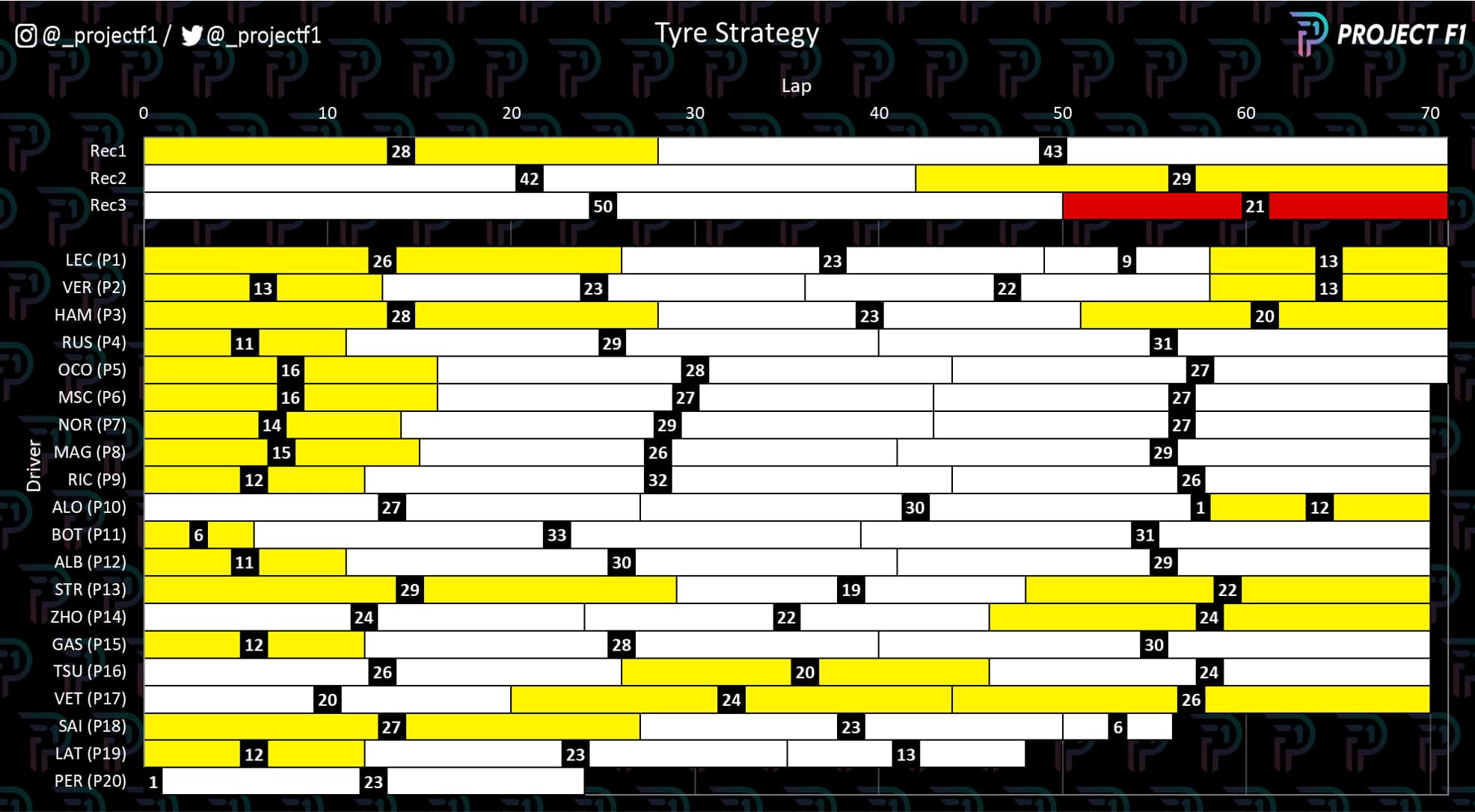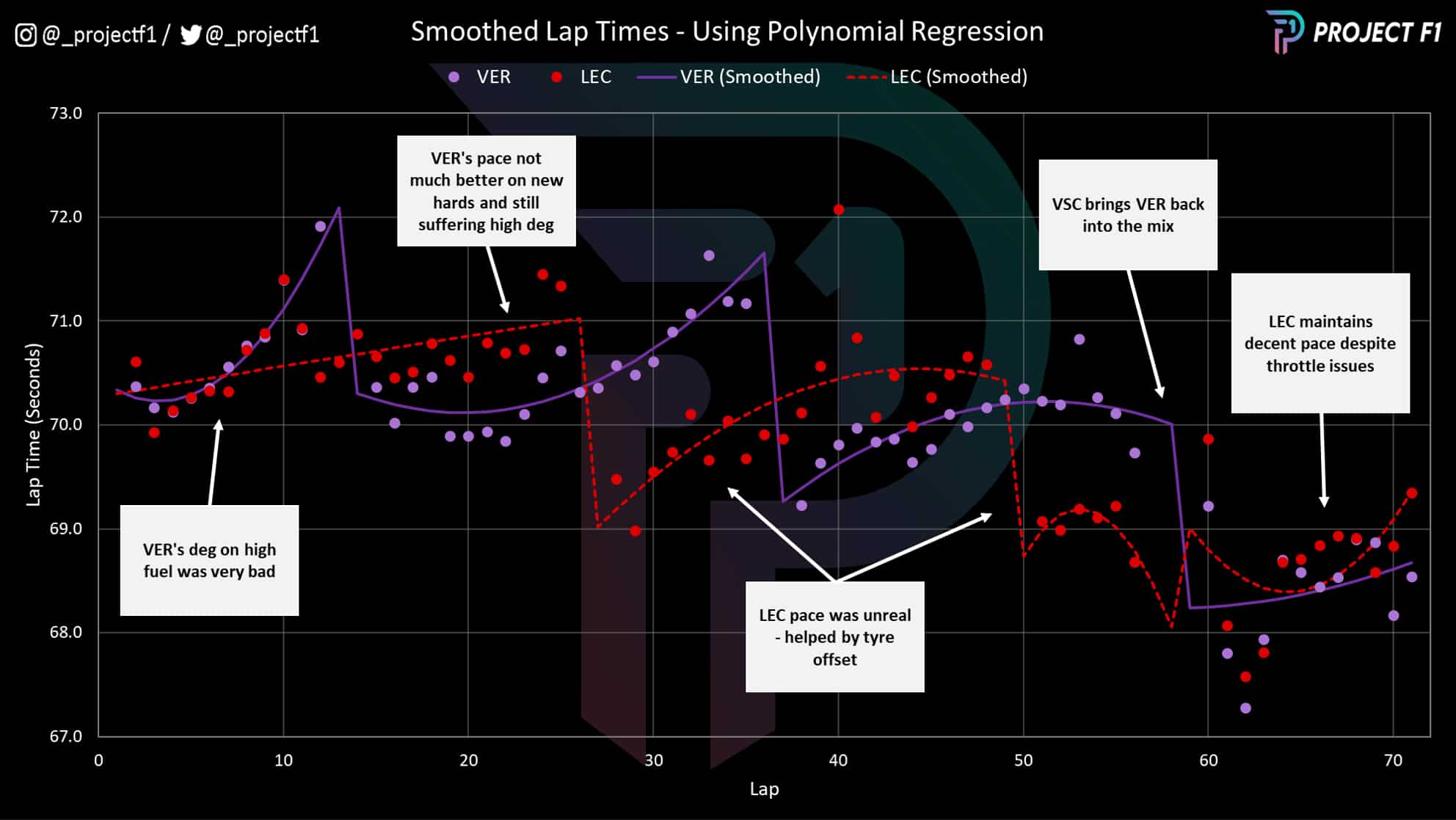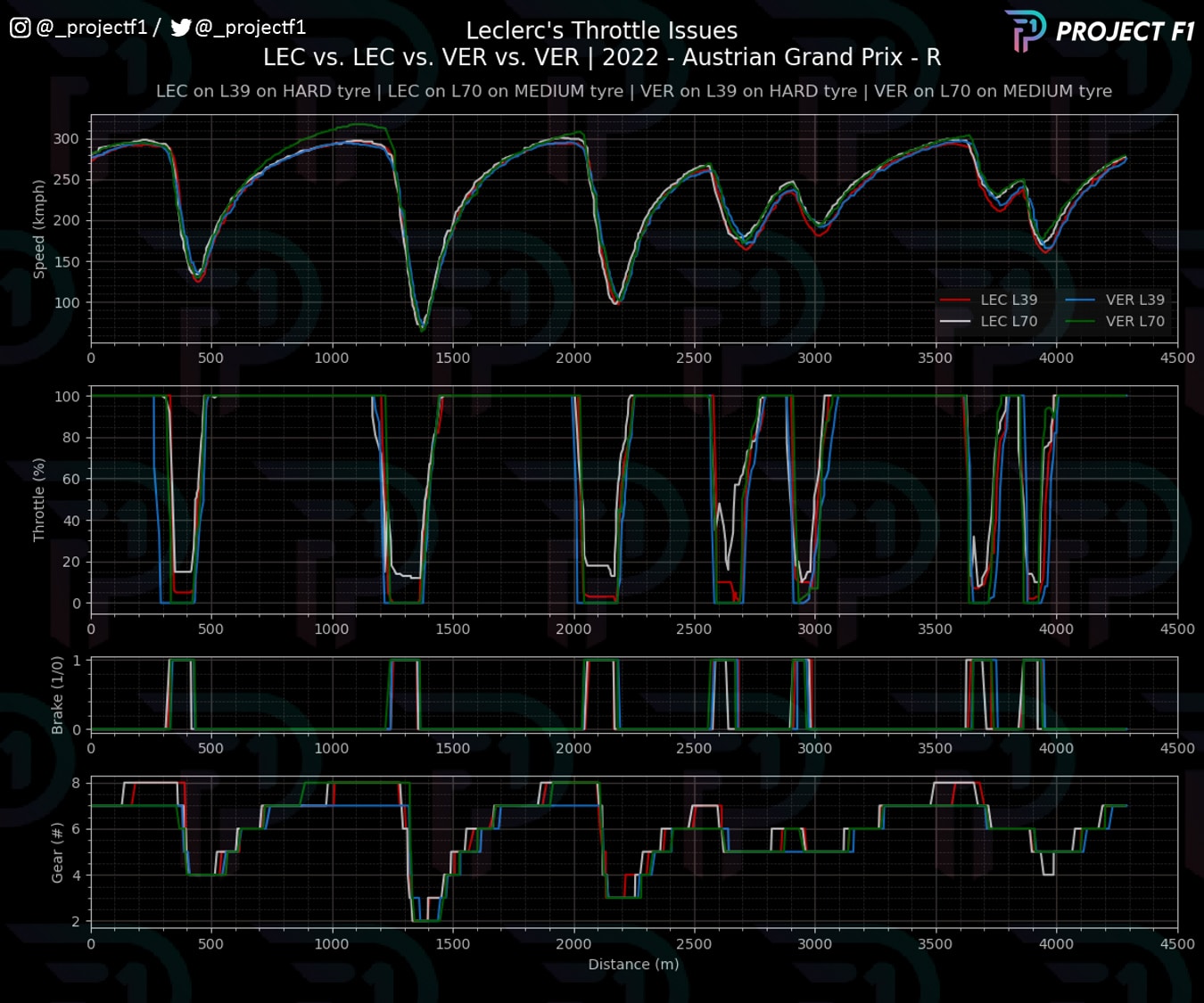Here, Leclerc demonstrates more consistency, hinting at Red Bull’s tyre issues to come.
Of course, the matched pace wasn’t reflected in the result because of Leclerc and Sainz’s squabbling at the start, which ruined both drivers’ chances of mounting a challenge against Verstappen.
As well as giving the Red Bull driver a healthy lead, it also showed the consequences of burning out your tyres, as Sainz had to back off after locking up in an attempt to pass Leclerc, leaving a material gap to his team-mate with regard to median pace.
Chart 2: Trend Sprint Race Pace Compared, Verstappen vs Leclerc
Staying with the sprint, this chart breaks down how Verstappen and Leclerc extracted the pace from the medium tyre. Verstappen pushed hard early on while Leclerc took it easier after the battle with Sainz.
Despite Leclerc’s early qualms, the flatter slope of the trend pace compared to Verstappen points to a better degradation profile. This would be exacerbated by Verstappen taking it easy, given his gap to Leclerc.
The signs were there that Red Bull had a weakness that could be exploited in the grand prix, especially given the higher fuel loads that increase tyre degradation. But Ferrari would need to grab the opportunity with both hands.
Austrian GP
Chart 3: Race Story, cumulative delta plot
As the lights went out for Sunday’s Grand Prix, Sainz again found himself in battle for position, but in this case he was defending against George Russell.
This may have been fortuitous for Ferrari, as it meant that its drivers weren’t tripping over each other.
It didn’t take long for Leclerc to move within DRS range and the chart above, showing drivers’ average lap times as the race progressed (compared to an average 1min 10sec lap), illustrates how closely the two frontrunners were matched.
By lap 7, Verstappen was already facing a drop-off in pace as his tyres wore substantially quicker than in the sprint.
The drop off was so bad that Red Bull’s best course of action was to swiftly bring Verstappen into the pits to change for a fresh set of hard tyres and remount a challenge for the lead of the race.
Chart 4: Tyre strategies, summary
Pirelli’s recommended scenarios at the top of the chart suggested that a one-stop strategy would be the fastest option in Austria, but Verstappen’s early stop on lap 13 forced Red Bull into a two-stop strategy, with Ferrari retaining the option to go either way.
While not ideal for Red Bull, it was an assertive call to pit promptly, rather than wasting time and performance trying to extend Verstappen’s stint and explore alternate strategy options.
Ferrari opted to keep both drivers out and not split the strategy with one driver covering off against Verstappen. Splitting the strategy seemed to make more sense so that it could cover more bases (like betting on black and red at the same time).
However, Ferrari’s pace and much lower degradation was so good that going all-in on the longer first stint for both drivers was not only feasible, but the dominant strategy choice.
After several races of questionable calls, this was a race where Ferrari got it right.
Chart 5: Trend race pace compared, Verstappen vs Leclerc
Ferrari’s superiority is clear in the chart above, which maps the pace differential between Leclerc and Verstappen.
Despite having fresh hard tyres, Verstappen wasn’t much faster than Leclerc on old mediums (between laps 13 and 24). To make matters worse for Red Bull, Leclerc was significantly faster than Verstappen after switching to the hard tyre during his second stint – helped handsomely by the large tyre offset from the longer first stint.
